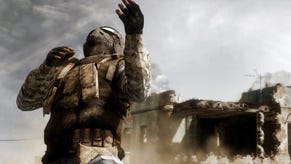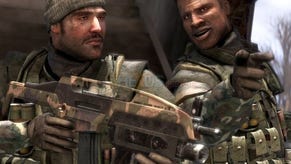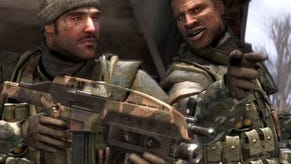Face-Off: Battlefield: Bad Company 2
Modern combat.
DICE is one of my favourite developers. Not only do they make great games, but this studio is a true innovator. Even when using third-party middleware, as in the case of Mirror's Edge, the Stockholm-based developer still managed to come up with something different and special. Battlefield: Bad Company 2 sees the team returning to its impressive, proprietary Frostbite engine, which specialises in large, open, expansive spaces and a proprietary physics engine that allows for some stunning, explosive, destructible environments.
Better yet, this is a newer iteration of the engine - Frostbite 1.5 - bringing with it a range of new features and performance enhancements over its predecessor. DICE's previous Battlefield games enjoyed a small but significant technological advantage on Xbox 360. So how does Bad Company 2 measure up? Let's kick off with the customary Face-Off comparison movie, and you can check out a triple-format 720p comparison gallery elsewhere on Eurogamer.
Graphically there are several differences between the two console versions, and just how much impact they have on the overall sense of image quality varies dramatically. It's safe to say that the main artifact you'll notice was one that was very prominent indeed in the multiplayer demo. Certain transparencies are handled in a much more visually pleasing way on PlayStation 3. Check out these shots for some idea of what we're talking about.


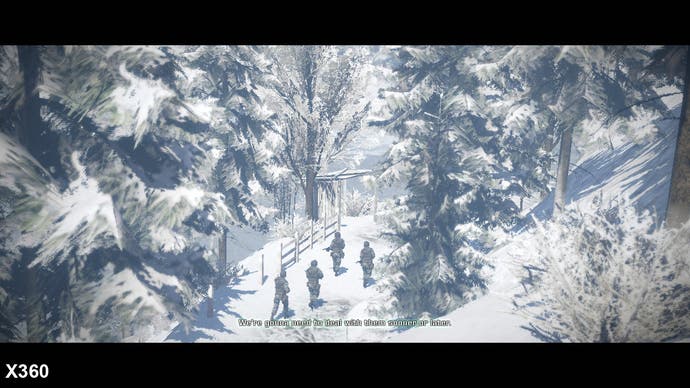
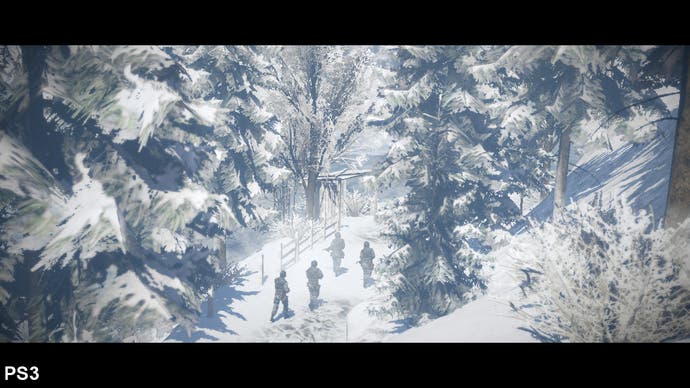
A "screen door" dither effect on some foliage, most obvious in the snow levels, looks a touch rough on Xbox 360 while it is not an issue at all on PlayStation 3. While it's not exactly a huge problem, it's undoubtedly the case that the PS3 version looks better without it, using a more conventional alpha-test technique for its transparency. While it's most obvious in the snowy levels, a similar bandwidth-saving measure is also found elsewhere.
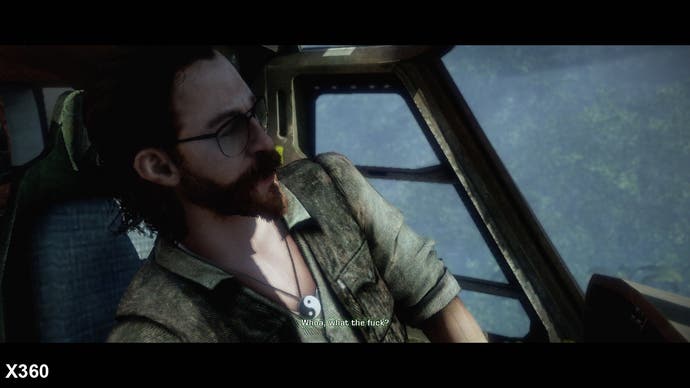

Without technical insight from DICE, it's difficult to understand quite why these decisions have been made, but what we do know from the firm's brilliant archive of presentations is that the ethos of the engine development focuses on PS3 as the primary platform. Get it right there, and rolling out cross-platform ensures the highest-quality result.
That being the case, it might partly explain why the same issues are also seen on the PC version. Alpha to coverage (assuming that's what DICE is using here), blends with multi-sampling anti-aliasing and looks much nicer (see: Forza 3). Take away the AA and you see a similar effect to the Xbox 360 code.
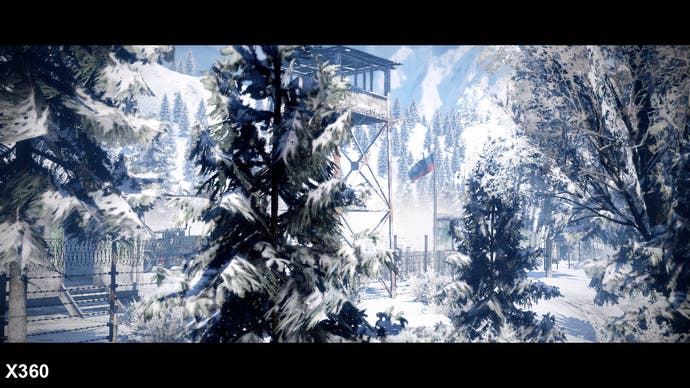
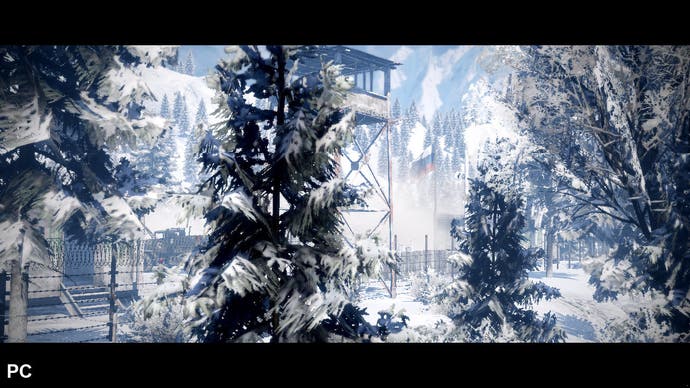


The Xbox 360's individual charms are there, but they are much less noticeable compared to the hit to image quality found in the snow levels. Shadow filtering appears to be a touch more refined on 360, while the implementation of water on Xbox 360 also looks to be a cut above the PS3 version of the game, which looks as though it's using a lower-precision effect.
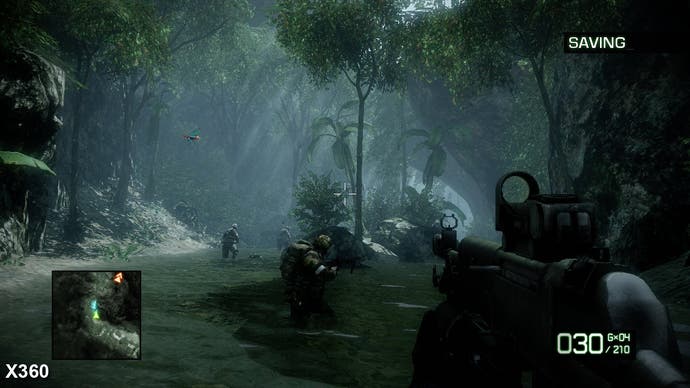
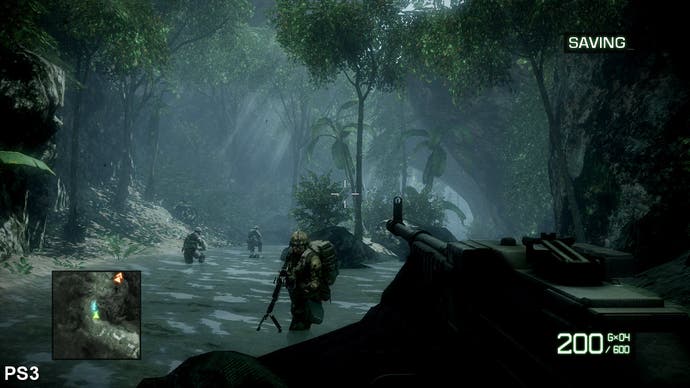
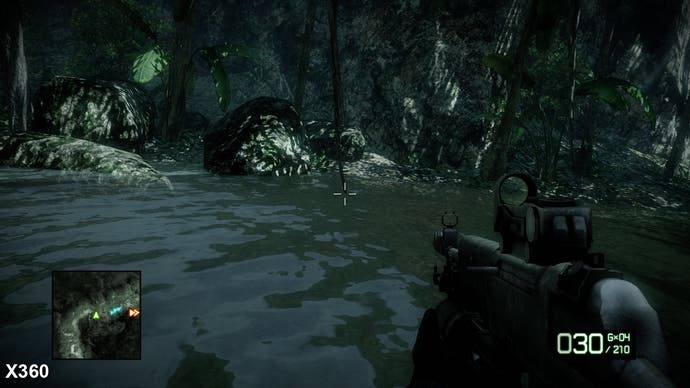

So, plus and minus points for both versions of the game, but clearly the visual drawbacks in the Xbox 360 version are the more noticeable overall. Performance-wise, Xbox 360 usually has the advantage in these Face-Offs, and it's no surprise to see it's a similar state of affairs with Bad Company 2. However, anyone looking for a gulf in frame-rate or controller response is going to be disappointed.
Bad Company 2 360 has an ever-so-slightly higher average frame-rate, and a small, but noticeable advantage in terms of screen-tear. So how do we define a "small but noticeable advantage"? Here's where things get tricky, owing to the implementation of v-sync DICE uses on PS3, and how its effects diminish the usefulness of our measurement tools.
Here are a couple of clips taken from some pretty hardcore gameplay. The excerpts are unsynchronised, but are taken from the same areas of the game with the player following much the same course through the levels we've highlighted. The idea here is to see how each console version of Bad Company 2 deals with various important elements that define the game: plenty of action, things blowing up and large, expansive levels.
Results reveal that in the heat of gameplay, there is very little to tell the two version of Bad Company 2 apart. Both are capped at 30FPS and both will drop v-sync before losing frames, the idea being to maintain controller response and keep overall frame-rate as high as possible. In the clips above, lowest frame-rate was 25FPS on PS3, and 26FPS on 360: the difference essentially unnoticeable when averages are at 29.4FPS and 29.8FPS respectively.



